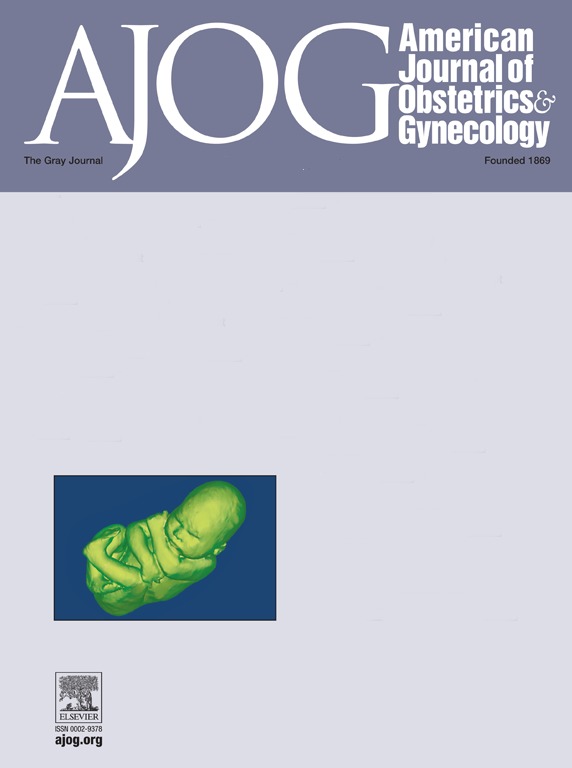骨盆检查训练中的教育经验和伦理紧张:妇产科见习人员的混合方法研究。
IF 8.4
1区 医学
Q1 OBSTETRICS & GYNECOLOGY
引用次数: 0
摘要
背景盆腔检查被用于许多妇科疾病的评估。所有专业的提供者都应该能够准确地执行这项检查,并强调患者的同意和舒适。妇产科实习是医学生培养对出生时被指定为女性的患者进行骨盆检查所需的技术和人际交往能力的重要时期。即将毕业的学生应该能够独立准确、灵敏地完成这些考试;然而,学生报告在临床环境中的接触有限。目的探讨医学生和老师在妇产科实习期间盆腔检查的学习和教学经验,并找出学生在临床环境中参与清醒患者盆腔检查的障碍。研究设计:这是一项前瞻性、混合方法的研究,研究对象为2024年6月至2025年3月间在一家大型学术中心的医学生和妇产科教师。作者使用改进的德尔菲过程开发了调查,并通过认知访谈对其进行了改进。学生们记录了他们进行盆腔检查的次数,并在为期5周的实习结束时完成了一项调查。教师通过电子邮件接受调查。定量分析包括描述性统计和非参数检验。从开放式调查反馈的定性数据进行归纳分析,以确定关键主题。结果93名受访学生(102人,回复率91.2%)平均进行镜检4.25次,手工检查2.17次。学术中心的学生比社区医院的学生做的考试要少得多。超过一半的学生(51.6%,93人中48人)没有进行任何手工检查。顺性男学生的窥镜检查次数少于顺性女学生(p< 0.01)。学生们报告说,实习结束后进行盆腔检查增加了信心,减少了焦虑。模拟和妇科教学助理课程被认为是有帮助的,但学生强调需要真正的临床机会。在89名受访教师中(171人,52.0%的回复率),学生参与的障碍包括患者偏好、考试复杂性、时间限制和机构文化。学术中心的教师比社区医院的教师更常提到时间限制(p< 0.01)和制度文化(p< 0.01)。结论:在这项单机构研究中,尽管信心有所提高,但许多学生在妇产科实习期间很少进行盆腔检查。导师行为、机构文化和临床环境显著影响学生的机会。虽然这些发现可能不能推广到所有的机构,但它们强调了用模拟补充临床培训、让导师参与、明确学生参与和患者同意的政策的重要性,这样学生才能达到盆腔检查的学习目标——特别是在机构政策限制学生参与特定环境的情况下。本文章由计算机程序翻译,如有差异,请以英文原文为准。
Educational Experience and Ethical Tensions in Pelvic Exam Training: A Mixed-Methods Study in the Obstetrics and Gynecology Clerkship.
BACKGROUND
The pelvic exam is used in the evaluation of many gynecologic complaints. Providers across all specialties should be able to perform this exam accurately with an emphasis on consent and patient comfort. The OB/GYN clerkship is an important time for medical students to develop the technique and interpersonal skills necessary to perform pelvic exams on patients assigned female at birth. Graduating students should be able to independently perform these examinations accurately and sensitively; however, students report limited exposure in the clinical setting.
OBJECTIVES
To explore medical student and preceptor experiences with pelvic exam learning and teaching during the obstetrics and gynecology (OB/GYN) clerkship, and to identify barriers to student participation in pelvic exams on awake patients in the clinical setting.
STUDY DESIGN
This was a prospective, mixed-methods study of medical students and OB/GYN preceptors at a large academic center between June 2024 and March 2025. The authors developed surveys using a modified Delphi process and refined them through cognitive interviews. Students logged the number of pelvic exams they performed and completed a survey at the end of the 5-week clerkship. Preceptors were surveyed via email. Quantitative analysis included descriptive statistics and nonparametric tests. Qualitative data from open-ended survey responses were analyzed inductively to identify key themes.
RESULTS
Among 93 student respondents (out of 102, 91.2% response rate), the average number of exams performed per student was 4.25 speculum and 2.17 bimanual exams. Students at the academic center performed significantly fewer exams than those at the community hospital. Over half of students (51.6%, 48 of 93) did not perform any bimanual exams. Cisgender male students performed fewer speculum exams than cisgender female students (p<.01). Students reported increased confidence and reduced anxiety with pelvic exams after the clerkship. Simulation and gynecologic teaching associate sessions were rated as helpful, but students emphasized the need for real clinical opportunities. Among 89 preceptor respondents (out of 171, 52.0% response rate), barriers to student participation included patient preference, exam complexity, time constraints, and institutional culture. Preceptors at the academic center cited time constraints (p<.01) and institutional culture (p<.01) more often than those at the community hospital.
CONCLUSIONS
In this single-institution study, despite improved confidence, many students performed few pelvic exams during the OB/GYN clerkship. Preceptor behavior, institutional culture, and clinical context significantly impacted student opportunity. While these findings may not be generalizable to all institutions, they underscore the importance of supplementing clinical training with simulation, engaging preceptors, and clarifying policies around student participation and patient consent so that students can meet pelvic exam learning objectives-particularly in settings where institutional policies limit student involvement in specific settings.
求助全文
通过发布文献求助,成功后即可免费获取论文全文。
去求助
来源期刊
CiteScore
15.90
自引率
7.10%
发文量
2237
审稿时长
47 days
期刊介绍:
The American Journal of Obstetrics and Gynecology, known as "The Gray Journal," covers the entire spectrum of Obstetrics and Gynecology. It aims to publish original research (clinical and translational), reviews, opinions, video clips, podcasts, and interviews that contribute to understanding health and disease and have the potential to impact the practice of women's healthcare.
Focus Areas:
Diagnosis, Treatment, Prediction, and Prevention: The journal focuses on research related to the diagnosis, treatment, prediction, and prevention of obstetrical and gynecological disorders.
Biology of Reproduction: AJOG publishes work on the biology of reproduction, including studies on reproductive physiology and mechanisms of obstetrical and gynecological diseases.
Content Types:
Original Research: Clinical and translational research articles.
Reviews: Comprehensive reviews providing insights into various aspects of obstetrics and gynecology.
Opinions: Perspectives and opinions on important topics in the field.
Multimedia Content: Video clips, podcasts, and interviews.
Peer Review Process:
All submissions undergo a rigorous peer review process to ensure quality and relevance to the field of obstetrics and gynecology.

 求助内容:
求助内容: 应助结果提醒方式:
应助结果提醒方式:


